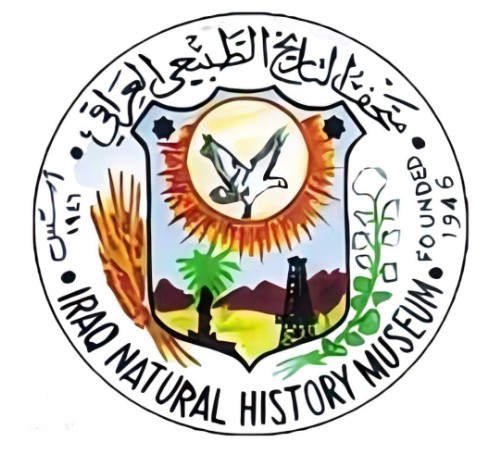MONITORING OF THE WILD MAMMAL FAUNA IN BAMO MOUNTAIN IN NORTHERN IRAQ (KURDISTAN) FOR THE FIRST TIME USING CAMERA TRAP METHOD AND RAISING AWARENESS FOR ITS CONSERVATION
DOI:
https://doi.org/10.26842/binhm.7.2020.16.2.0161Keywords:
Fauna of Iraq, Key species, Persian leopard, Protected areas, Sustainable management.Abstract
Mammals are under threat worldwide due to deforestation, hunting, and other human activities. In Iraq, a total of 93 species of wild mammals have been recorded including species with global conservation concern. Bamo Mountain is situated within the Zagros Mountains in northern Iraq which is a suitable habitat for wild mammals. Due to scarcity of the field survey efforts and cryptic behavior, monitoring of the wild mammals fauna in Zagros Mountain seems challenging. Therefore, we used a camera trap which seems to be an ideal way to determine species diversity of wild mammals in Bamo Mountain. Moreover, interviews with local villagers were performed. The mammalian diversity of Bamo Mountain is not fully explored but seemed threatened by local extinction due to poaching and wildlife trafficking, minefields, and annual fires.
In this study, a total of eight species of wild mammals were recorded for the first time in Bamo Mountain using camera trap method including the Persian leopard Panthera pardus saxicolor Pocock, 1927, and the Wild goat Capra aegagrus Erxleben, 1777, flagship and key species of conservation concern. As far as it is concerned, the major threats on the wild mammals were discussed and some important points were highlighted towards the establishment of the protected area in Bamo Mountain.
Received Date: 21 July 2020
Accepted Date: 19 September 2020
Downloads
References
Al-Sheikhly, O. F. 2012.The hunting of endangered mammals in Iraq. Wildlife Middle East, 6: 10.
Al-Sheikhly, O. F. and Haba, M. K. 2014.The field guide to the wild mammals of Iraq. Al-Farahidi Press, Baghdad, pp.
Al Sheikhly, O. F., Haba, M. K., Barbanera, F., Csorba, G. and Harrison, D. L. 2015. Checklist of the mammals of Iraq (Chordata: Mammalia). Bonn Zoological Bulletin, 64(1):33-58.
Al-Sheikhly, O. F., Haba, M. K., Görföl, T. and Csorba, G. 2015. First evidences of the occurrence of two bat species for Iraq. Mammalia. DOI: 10.1515/mammalia-2014-0098.
Al-Sheikhly, O. F., Haba, M. K., Ali N. Al-Barazengy and Nadheer A. Faza’a. 2020. New distribution range of the vulnerable wild goat (Capra aegagrus Erxleben, 1777) (Artiodactyla: Bovidae) to the south of its known extant in Iraq, with notes on its conservation. Bonn Zoological Bulletin, 69(1): 105–110.
Avgan, B., Raza, H., Barzani, M. and Breitenmoser, U. 2016. Do recent leopard Panthera pardus records from northern Iraq and south-eastern Turkey reveal an unknown population nucleus in the region? Zoology in the Middle East, 62: 95–104.
Bowyer, R. T., Boyce, M. S., Goheen, J. R. and Rachlow, J. L. 2019. Conservation of the world’s mammals: status, protected areas, community efforts, and hunting. Journal of Mammalogy, 100(3): 923-941.
Debata, S. and Swain, K. K. 2018. Estimating mammalian diversity and relative abundance using camera traps in a tropical deciduous forest of Kuldiha Wildlife Sanctuary, eastern India. Mammal Study, 43(1): 45-53.
Farhadinia, M. S., McClintock, B. T., Johnson, P. J., Behnoud, P., Hobeali, K., Moghadas, P., Hunter, L. T. B. and Macdonald, D. W. 2019. A paradox of local abundance amidst regional rarity: the value of montanerefugia for Persian leopard conservation. Scientific Reports, 9(1): 1-12.
Harrison, D. L. and Bates, P. J. J. 1991. The mammals of Arabia, second edition. Harrison Zoological Museum, Sevenoaks, Kent, United Kingdom, 354 pp.
Hatt, R. T. 1959. The mammals of Iraq. Miscellaneous Publications, Museum of Zoology, University of Michigan, no. 106, 113 pp.
Khorozyan, I. 2016. Panthera pardus ssp. saxicolor. The IUCN Red List of Threatened Species 2016: e.T15961A6947473. Downloaded on 02 September 2020.
Moqanaki, E., Breitenmoser, U., Kiabi, B. H., Masoud, M. and Bensch, S. 2013. Persian leopards in the Iranian Caucasus: a sinking ‘source’ population? Cat News, 59: 22-25.
Nature Iraq and Iraqi Ministry of Environment. 2011. Key Biodiversity Areas of Iraq 2010 Site Review. Sulaimani: Nature Iraq. Publication No.NI-0311-01.
Nature Iraq. 2017. Key Biodiversity Areas of Iraq. Al-Ghadeer Printing, Basra, 297 pp.
.
Parchizadeh, J. and Adibi, M. A. 2019. Distribution and human‐caused mortality of Persian leopards Panthera pardus saxicolor in Iran, based on unpublished data and Farsi gray literature. Ecology and Evolution, 9: 11972-11978.
Raza, H. A., Ahmad, S. A., Hassan, N. A., Ararat, K. and Mariwan, Q. 2012.First photographic record of the persian leopard in Kurdistan, northern Iraq. Cat News, 56: 34-35.
Spassov, N., Ignatov, A. and Acosta-Pankov, I. 2016. On the status of the leopard in Turkey, again. CAT News, 64:18–22.
Stein, A. B., Athreya, V., Gerngross, P., Balme, G., Henschel, P., Karanth, U., Miquelle, D., Rostro-Garcia, S., Kamler, J. F., Laguardia, A., Khorozyan, I. and Ghoddousi, A. 2020. Panthera pardus (amended version of 2019 assessment). The IUCN Red List of Threatened Species 2020: e.T15954A163991139. https://dx.doi.org/10.2305/IUCN.UK.2020-1.RLTS.T15954A163991139.en. Downloaded on 09 July 2020.
Sutherland, W. 2006. Ecological census techniques: a handbook. Cambridge University Press, Cambridge, 432 pp.
Weinberg, P. and Ambarli, H. 2020. Capra aegagrus. The IUCN Red List of Threatened Species 2020: e.T3786A22145942. https://dx.doi.org/10.2305/IUCN.UK.2020-2.RLTS.T3786A22145942.en. Downloaded on 07 September 2020.
Yasuda, M. 2004. Monitoring diversity and abundance of mammals with camera traps: a case study on Mount Tsukuba, central Japan. Mammal Study, 29(1): 37- 46.











